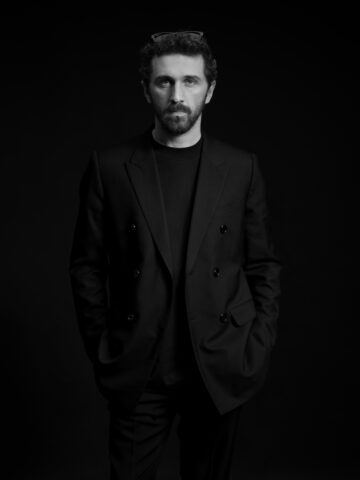
IN CONVERSATION WITH DAVID KOMA
Blumarine, long synonymous with butterflies, chiffon and a distinctly Y2K aesthetic, has…
Interview by Chiara Anzivino
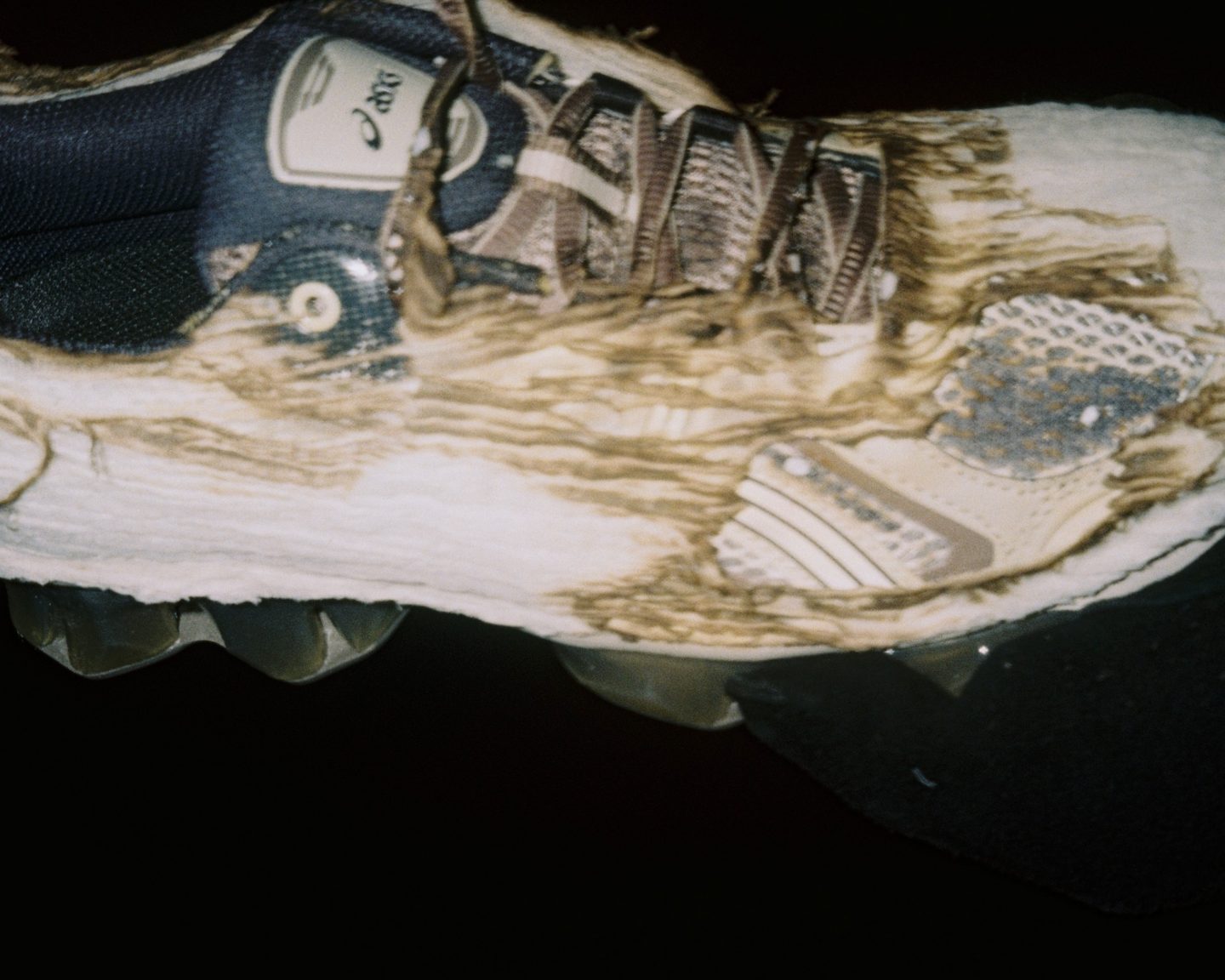
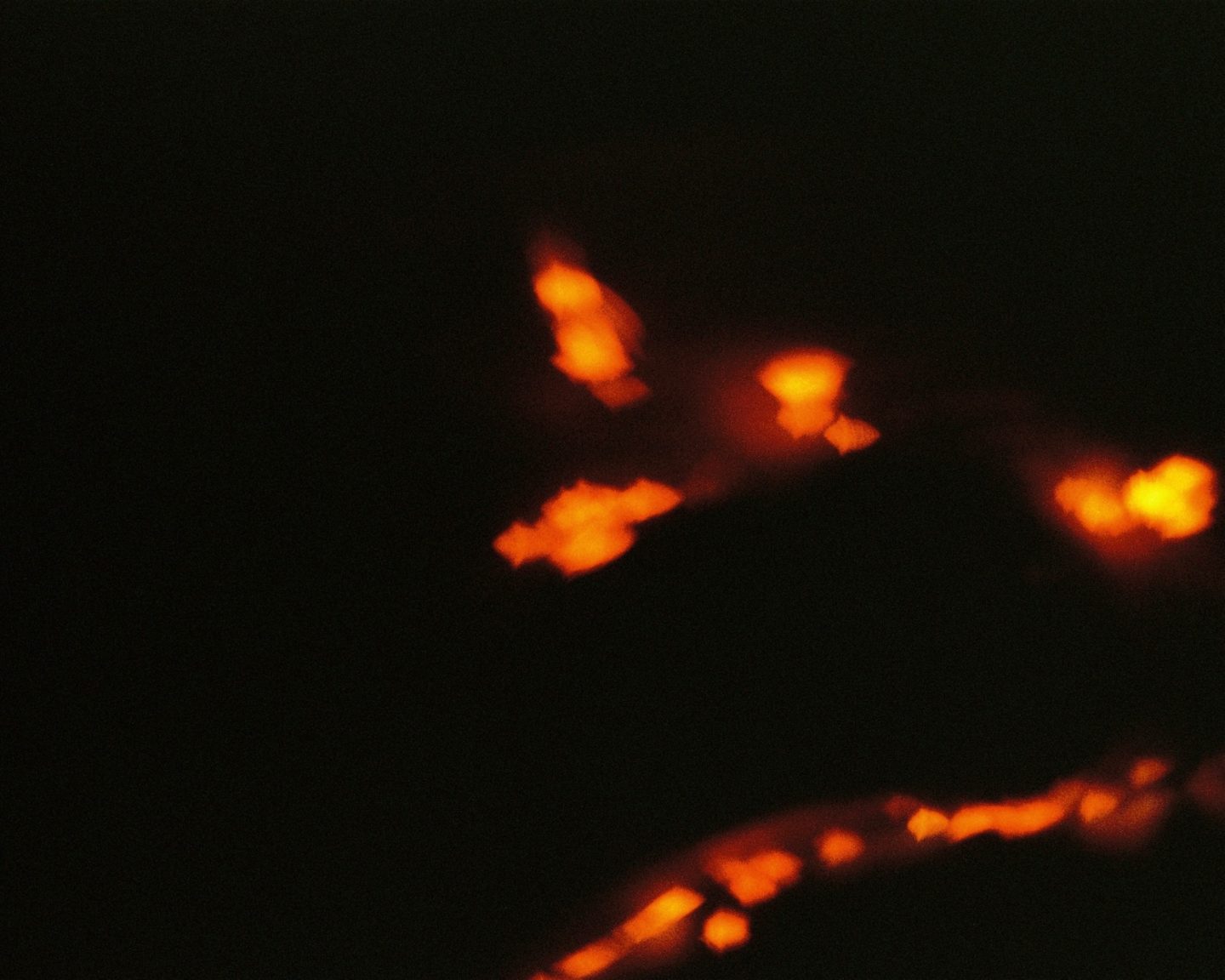
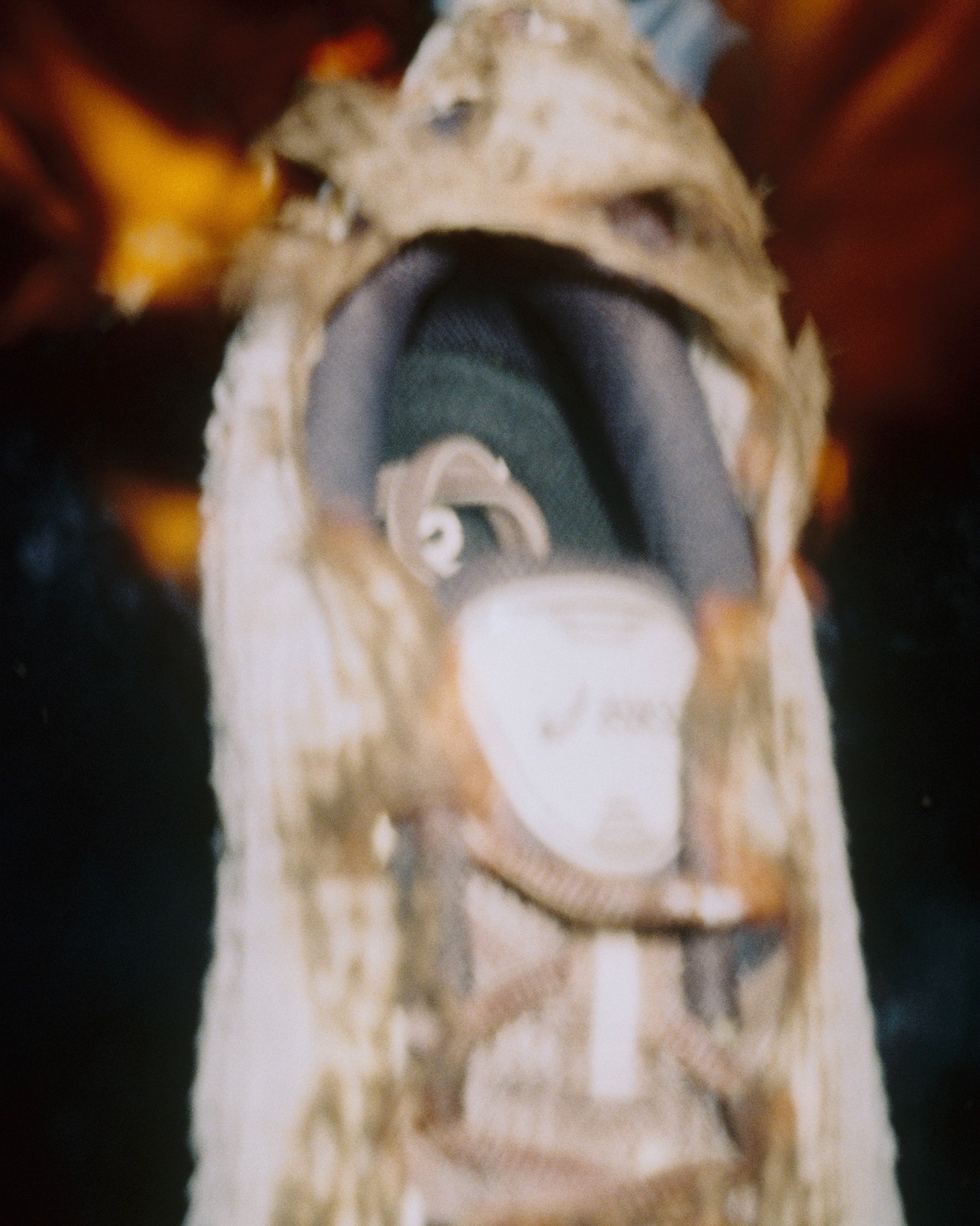
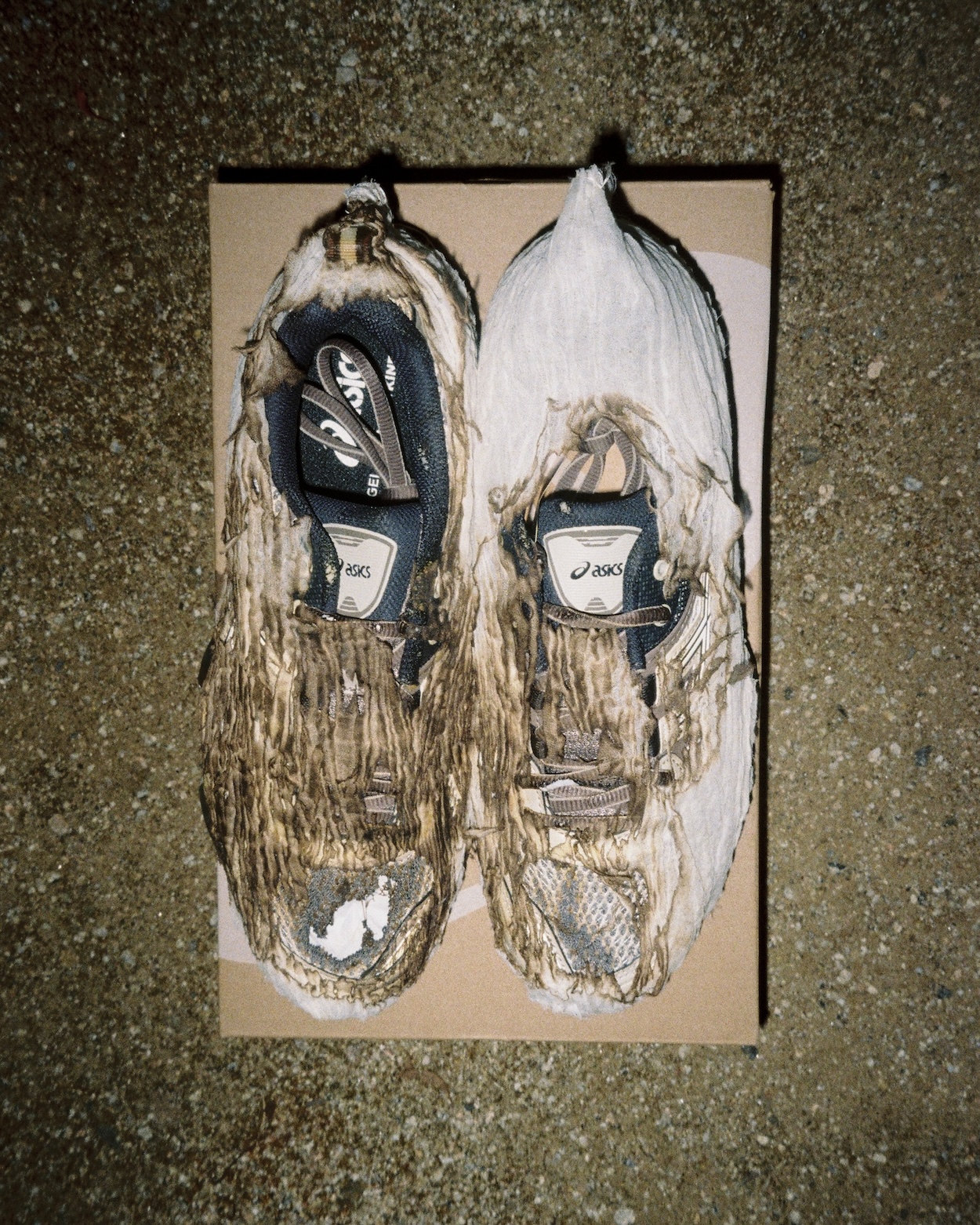
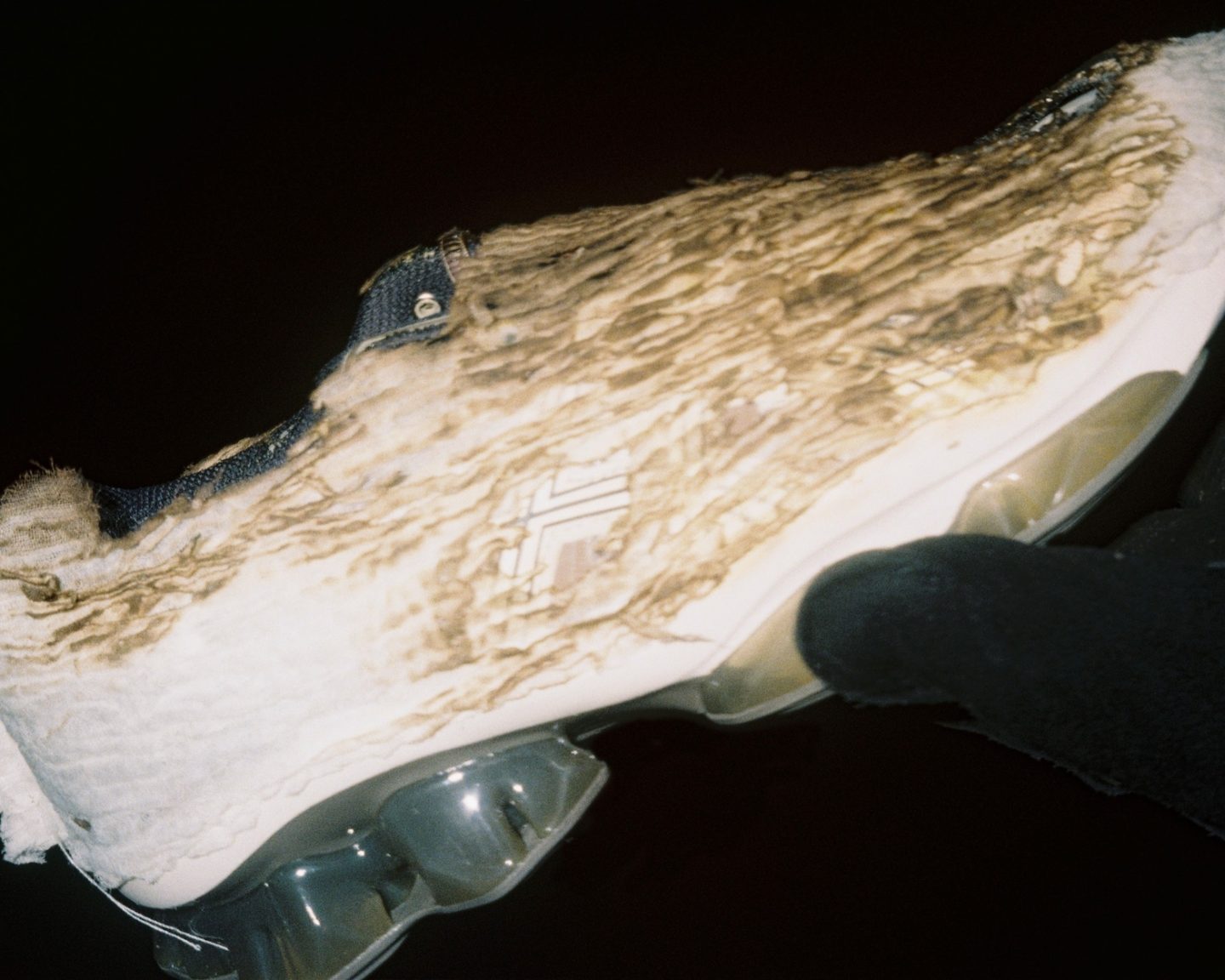
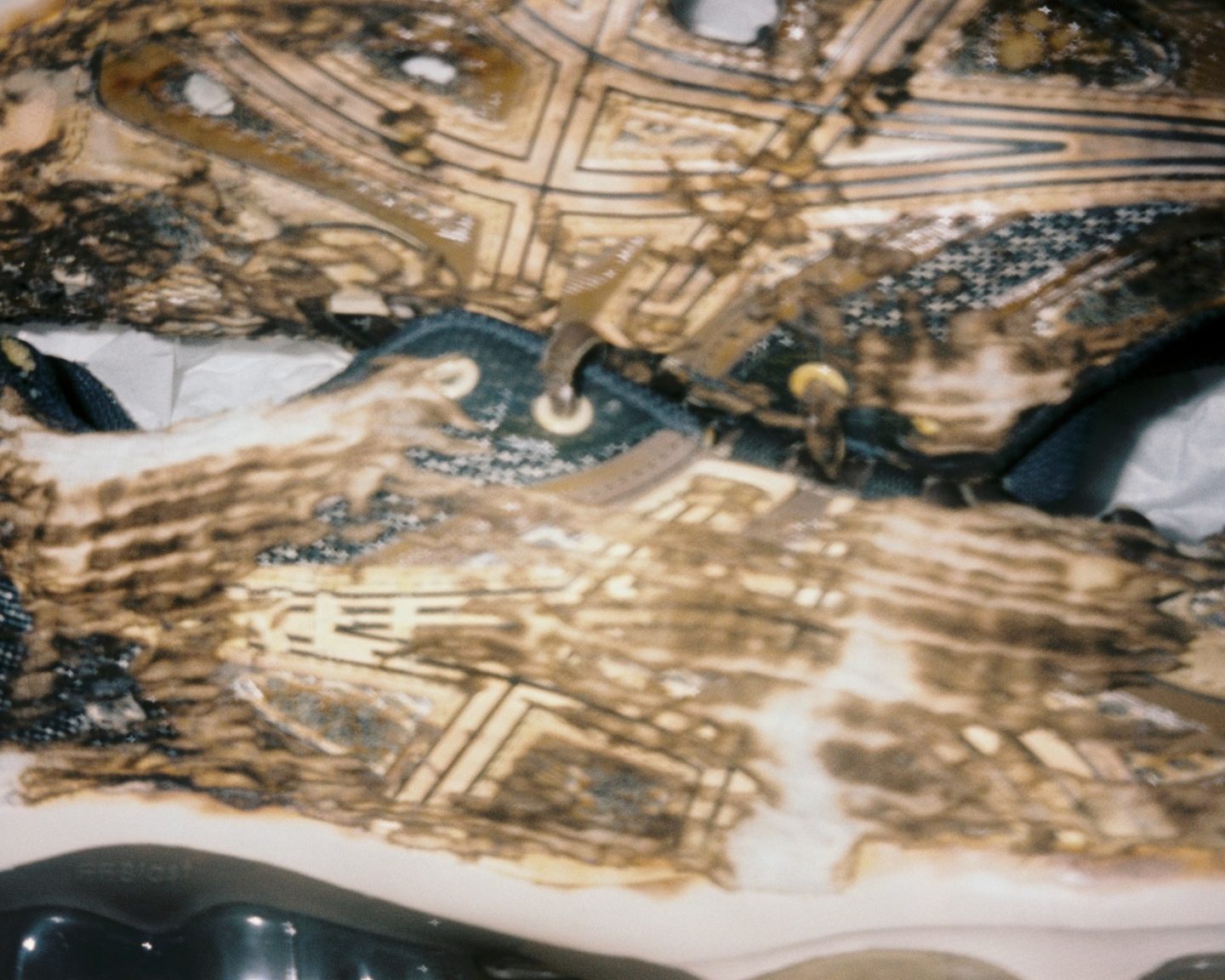
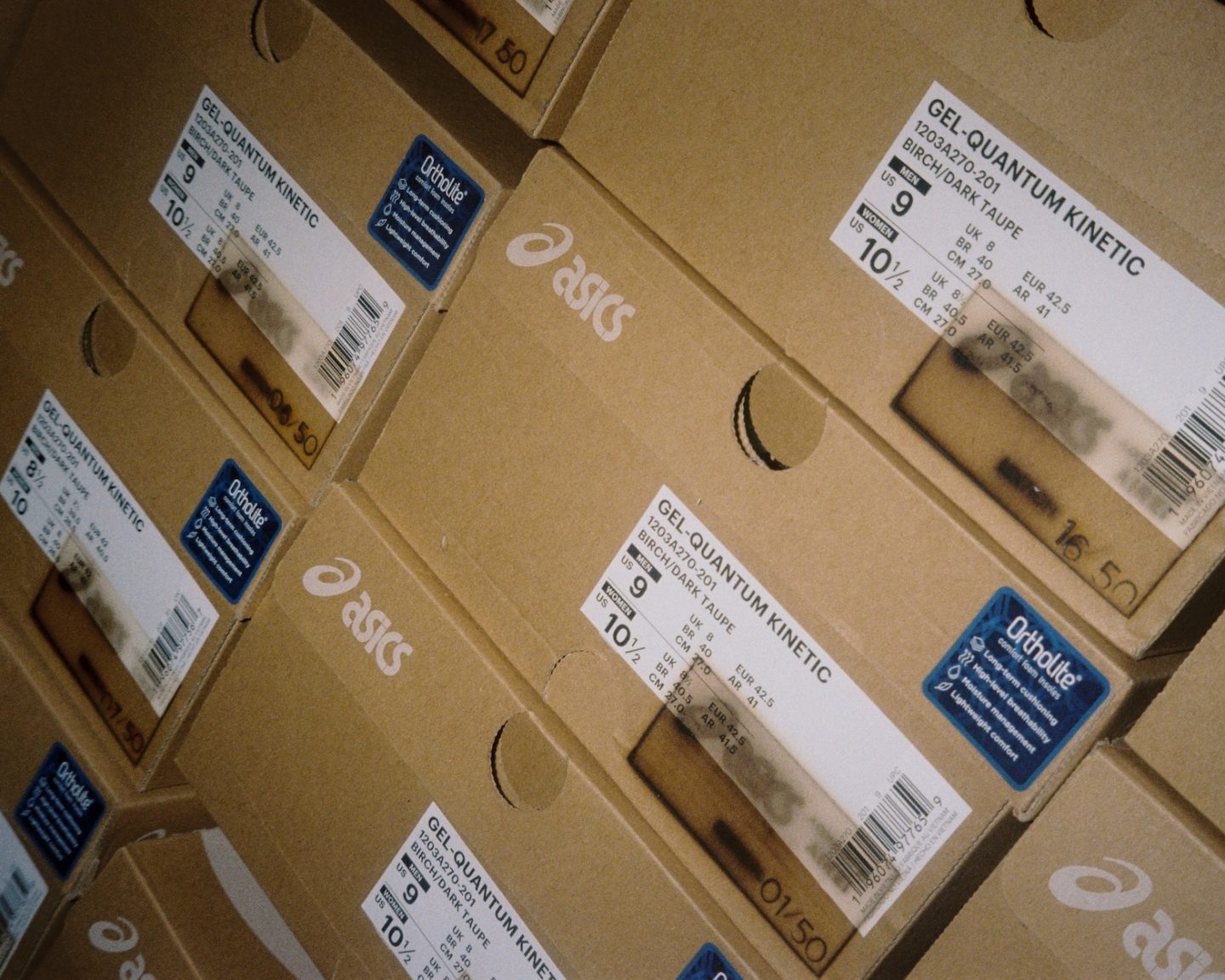
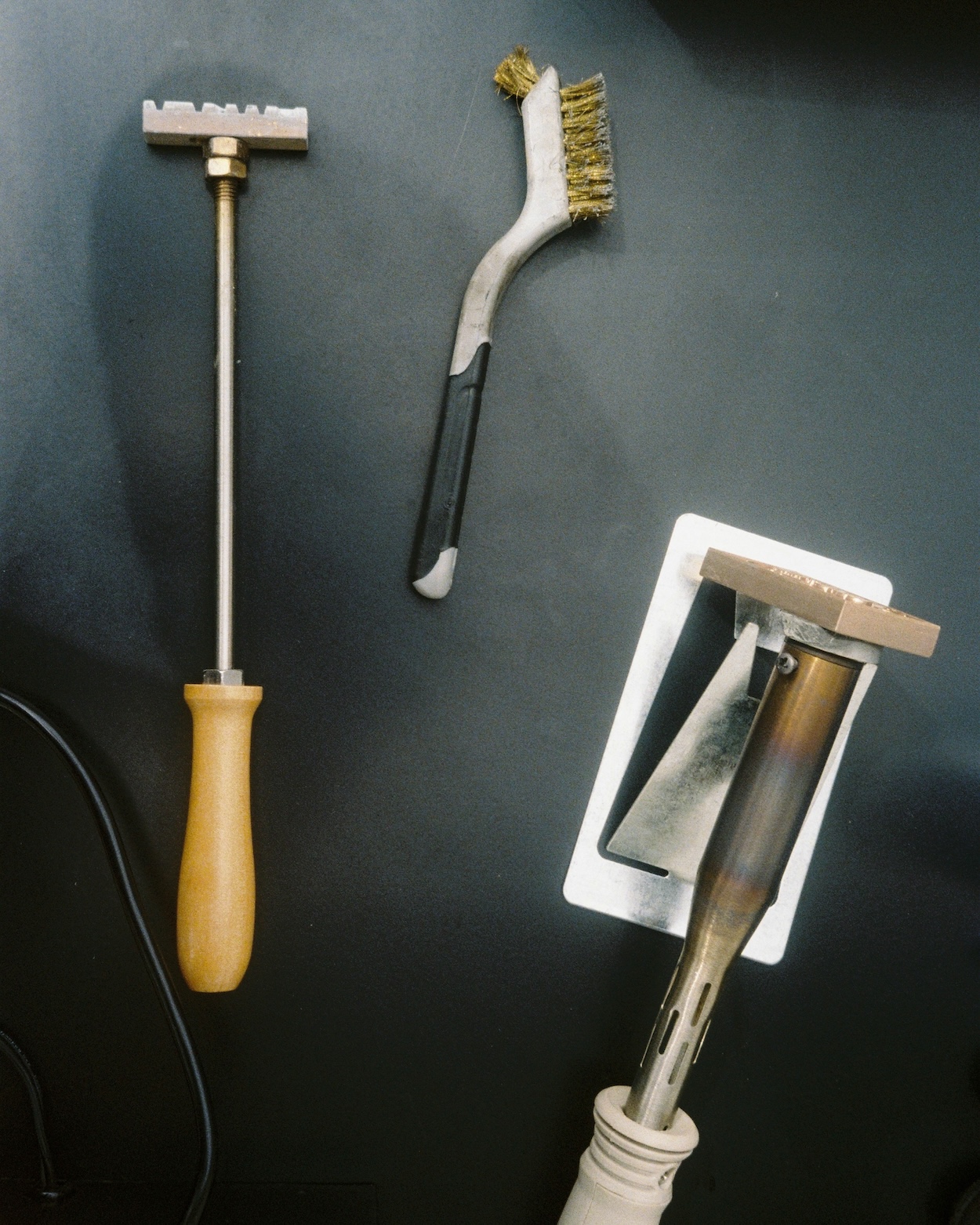
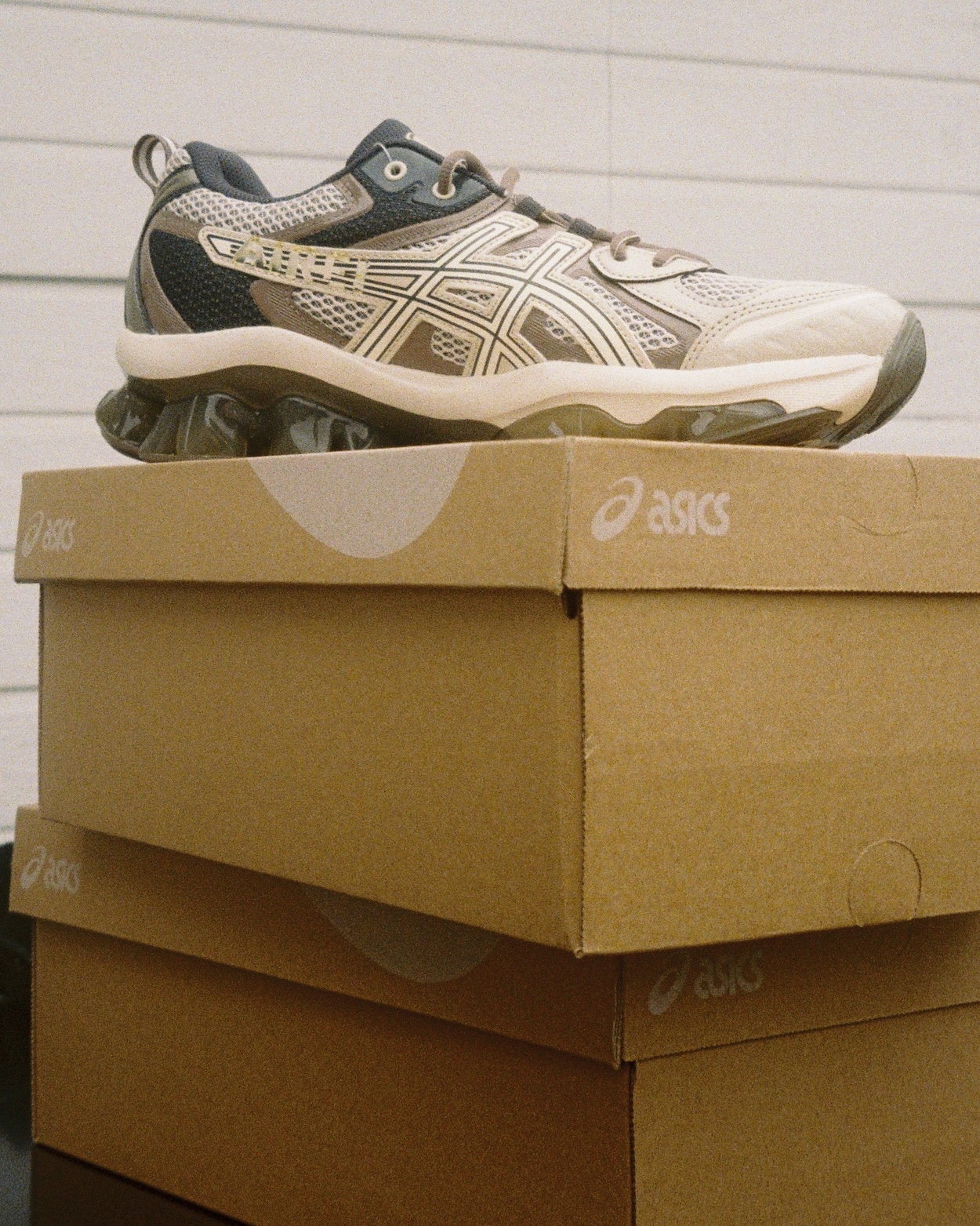
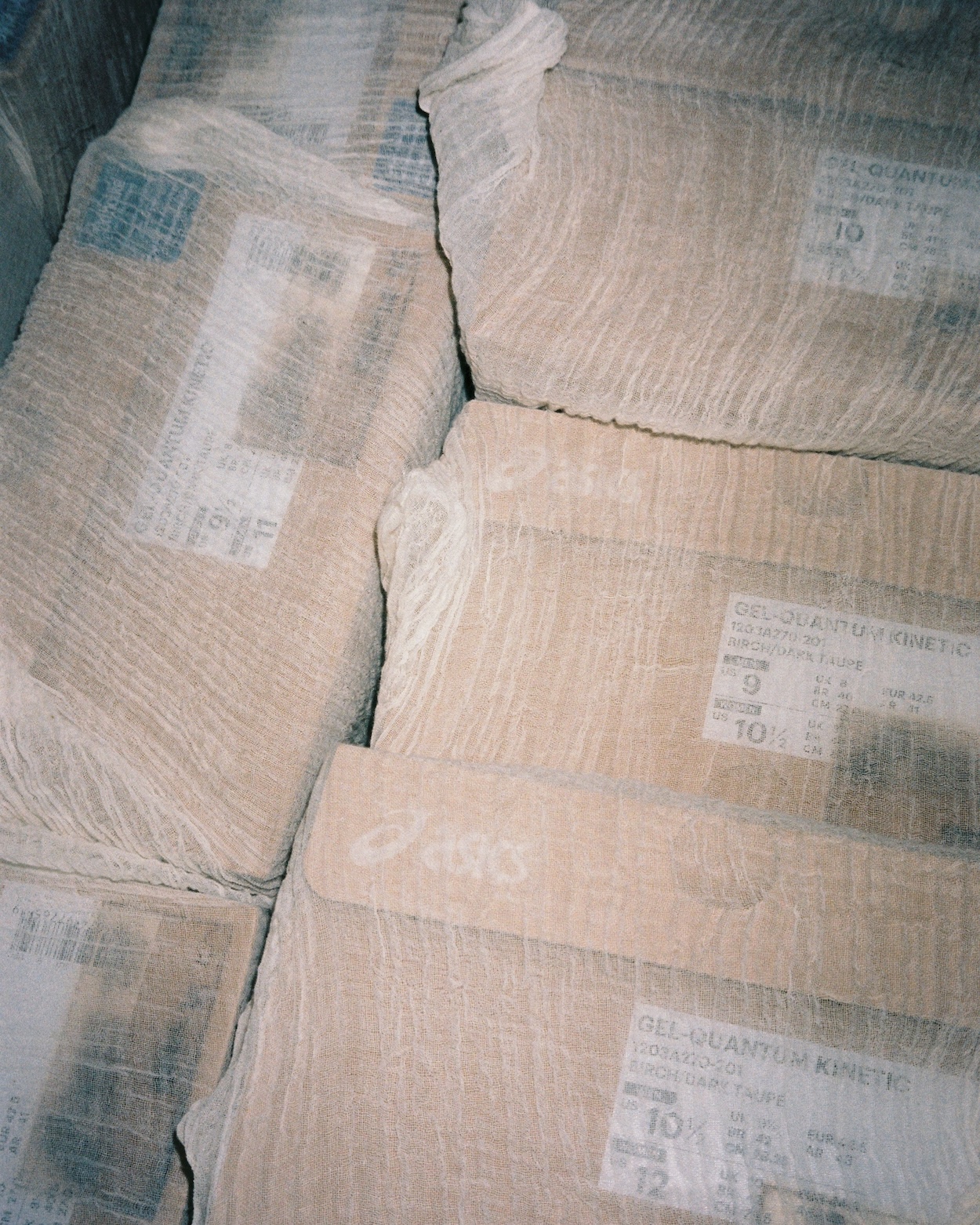
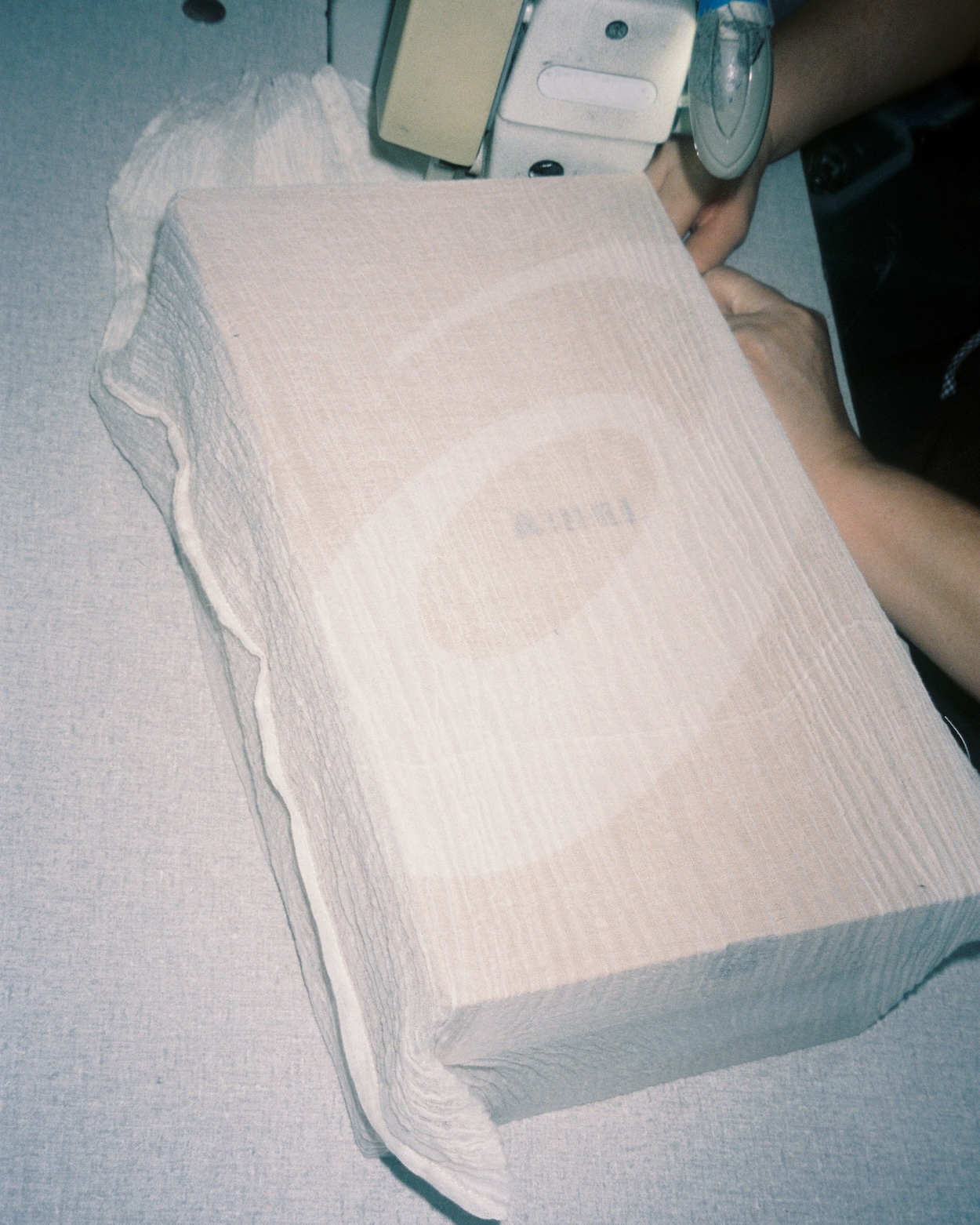
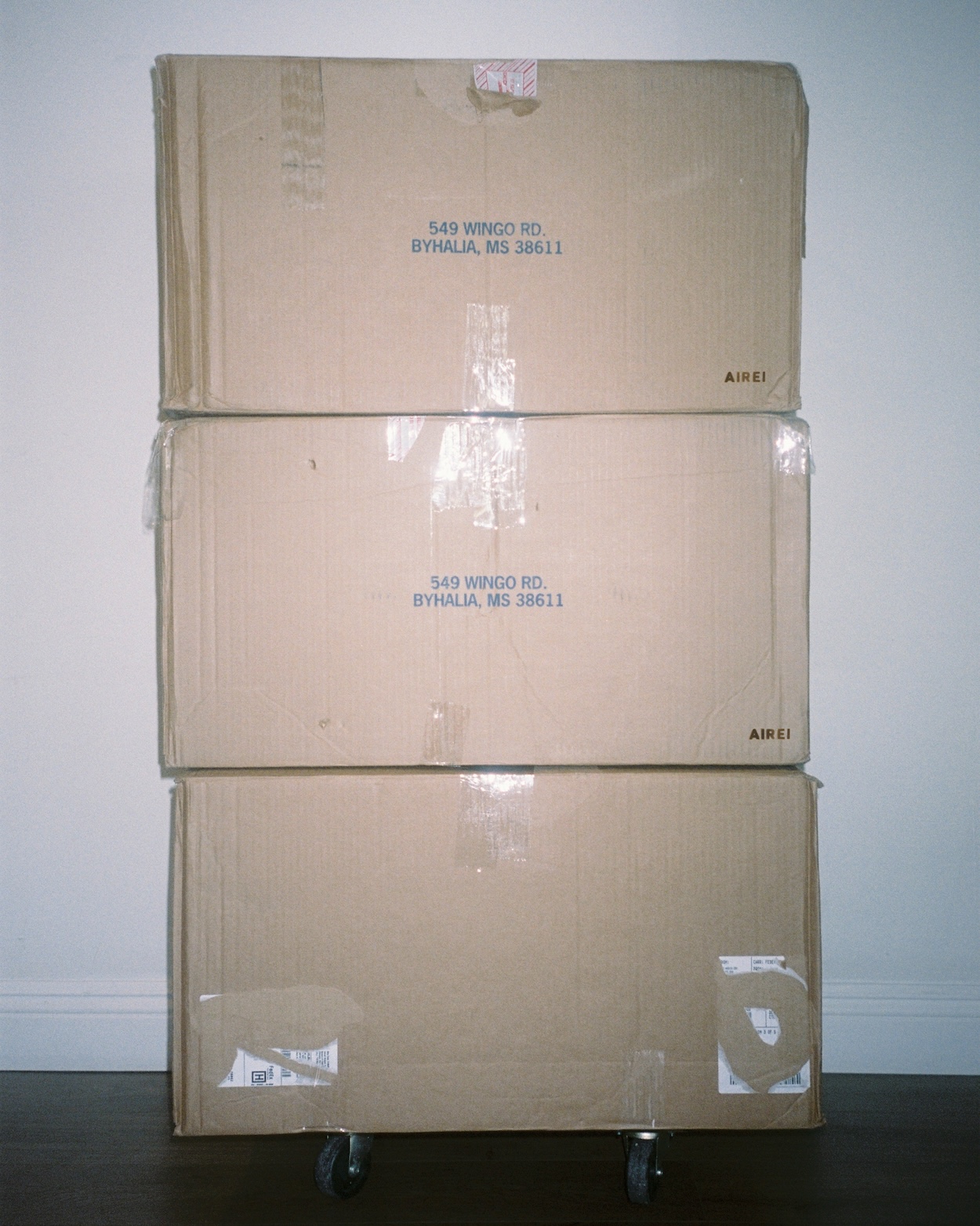
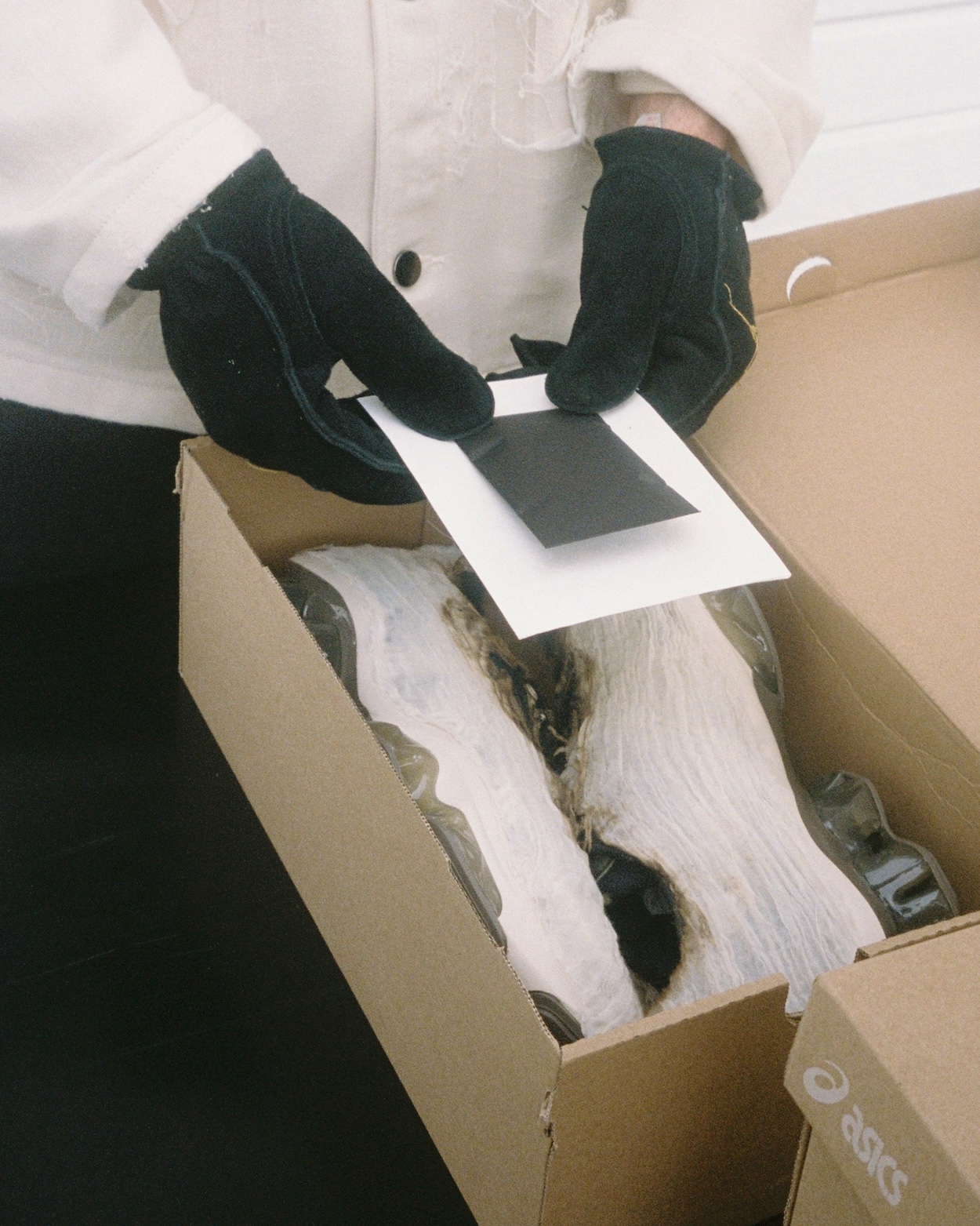
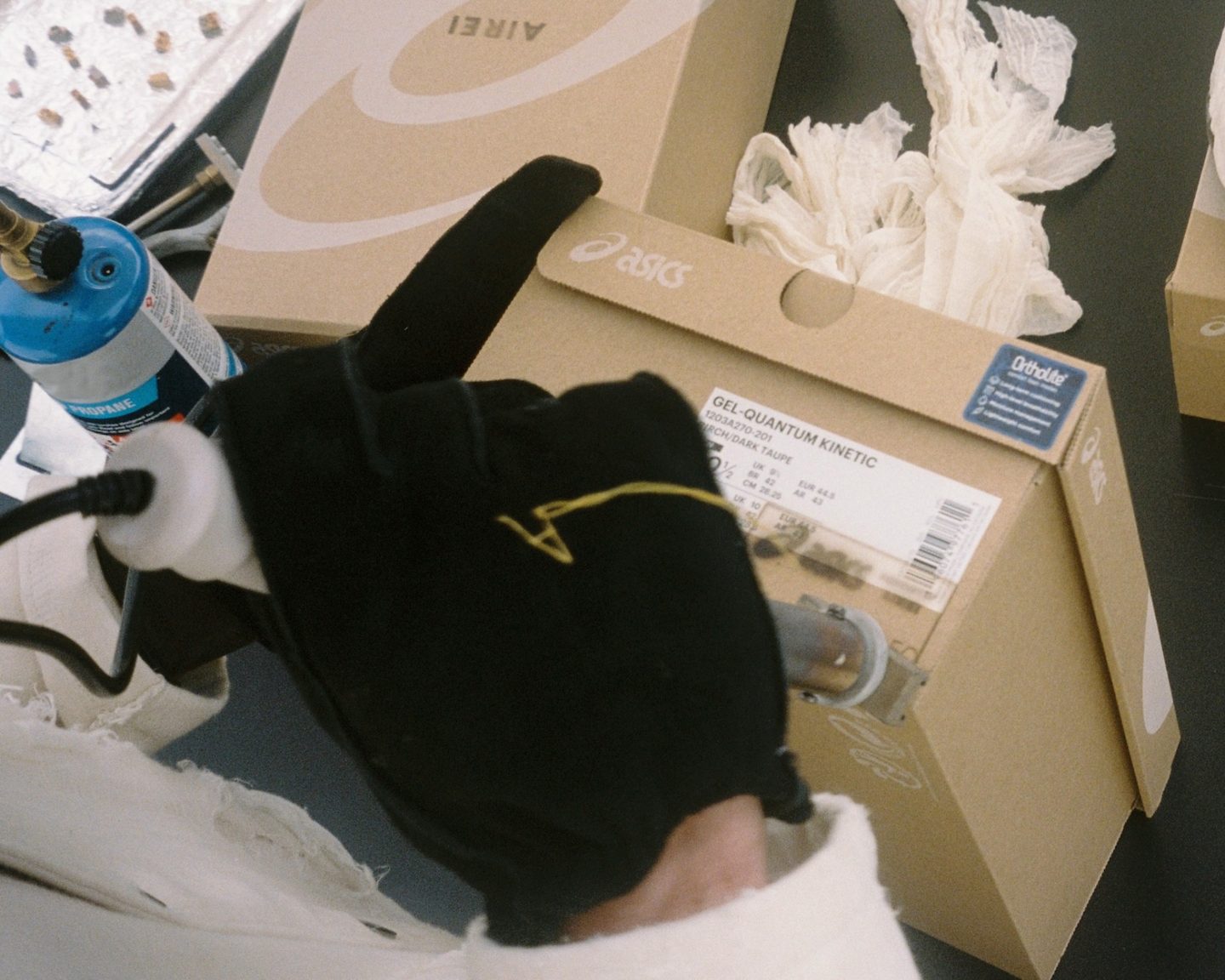
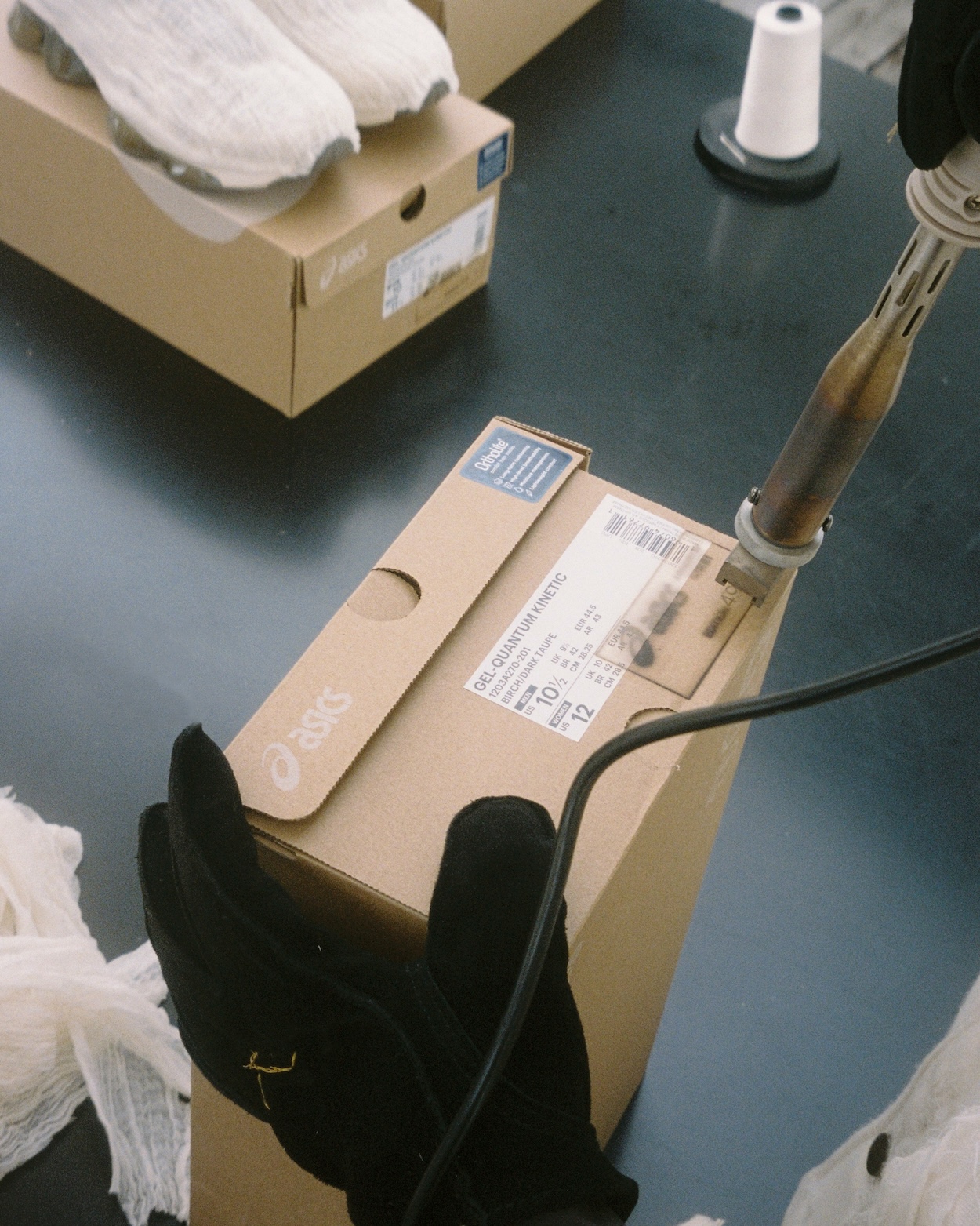
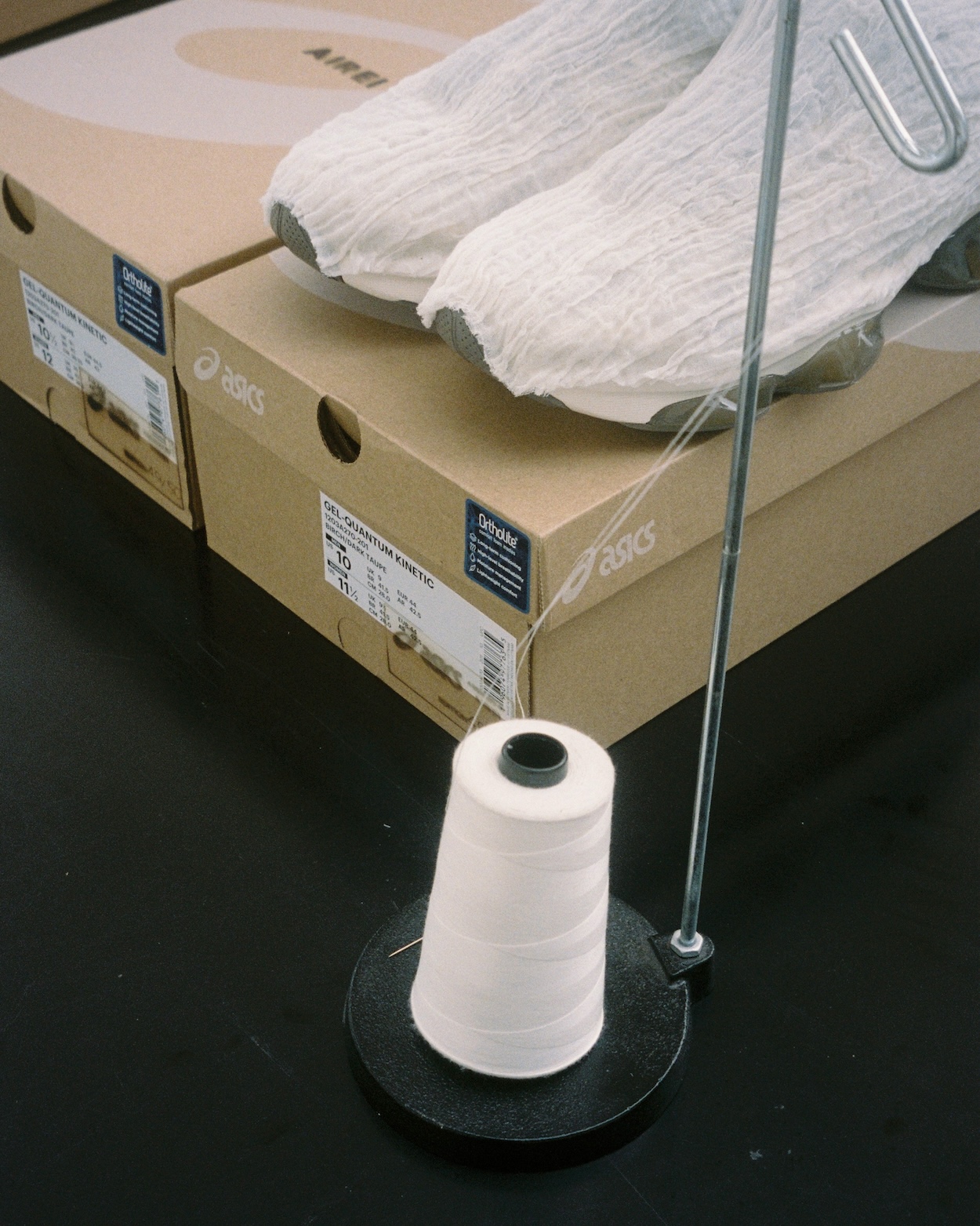
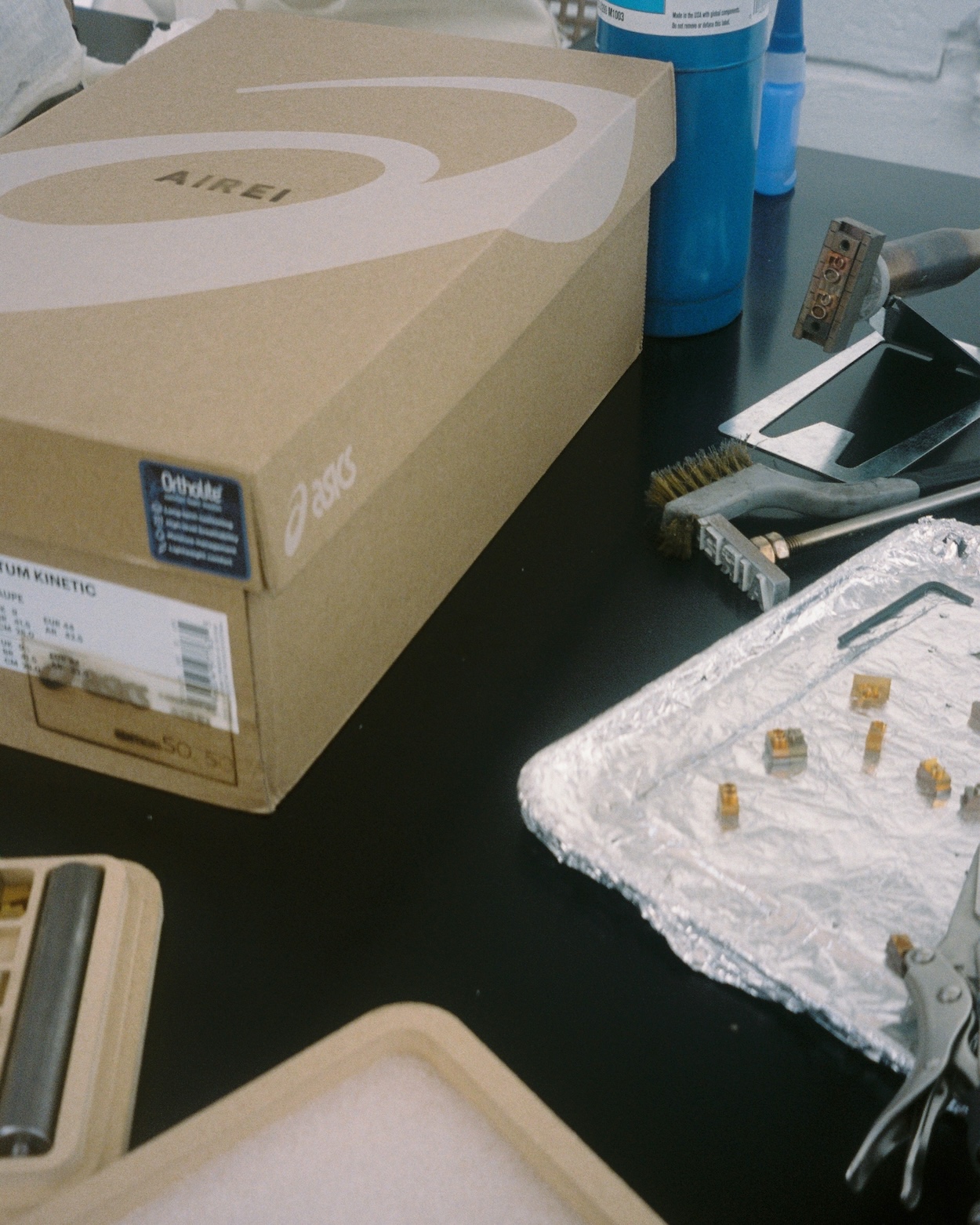
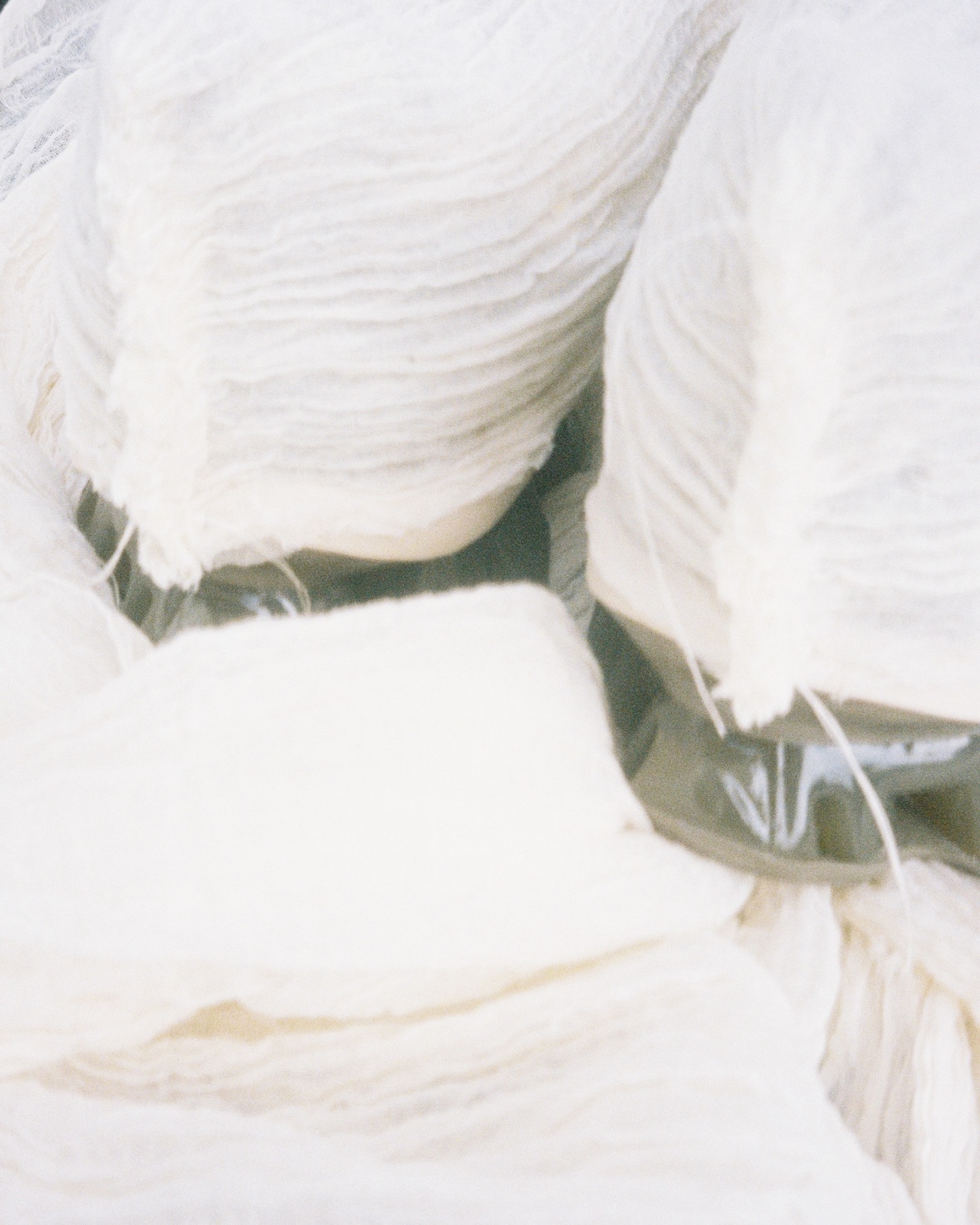
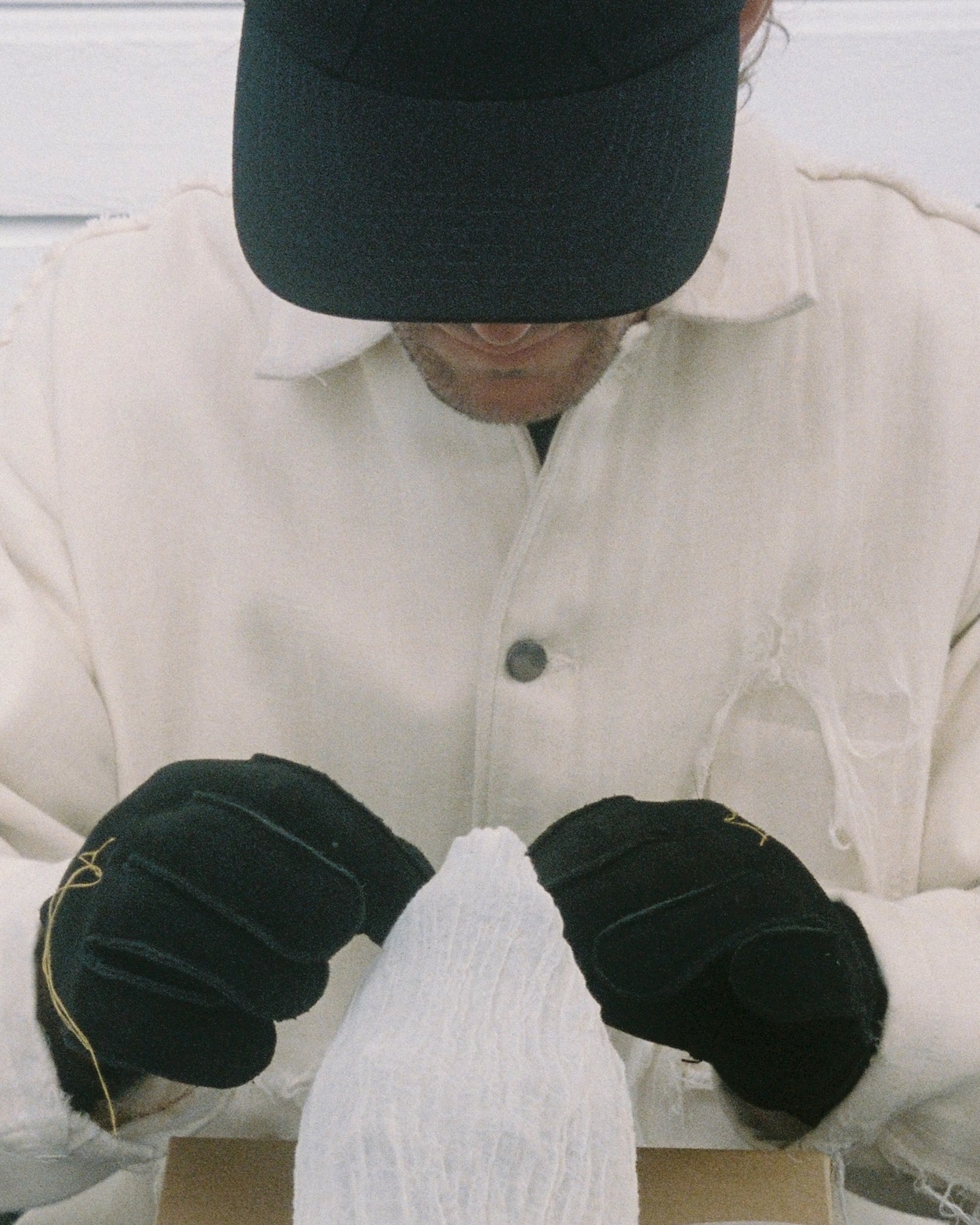
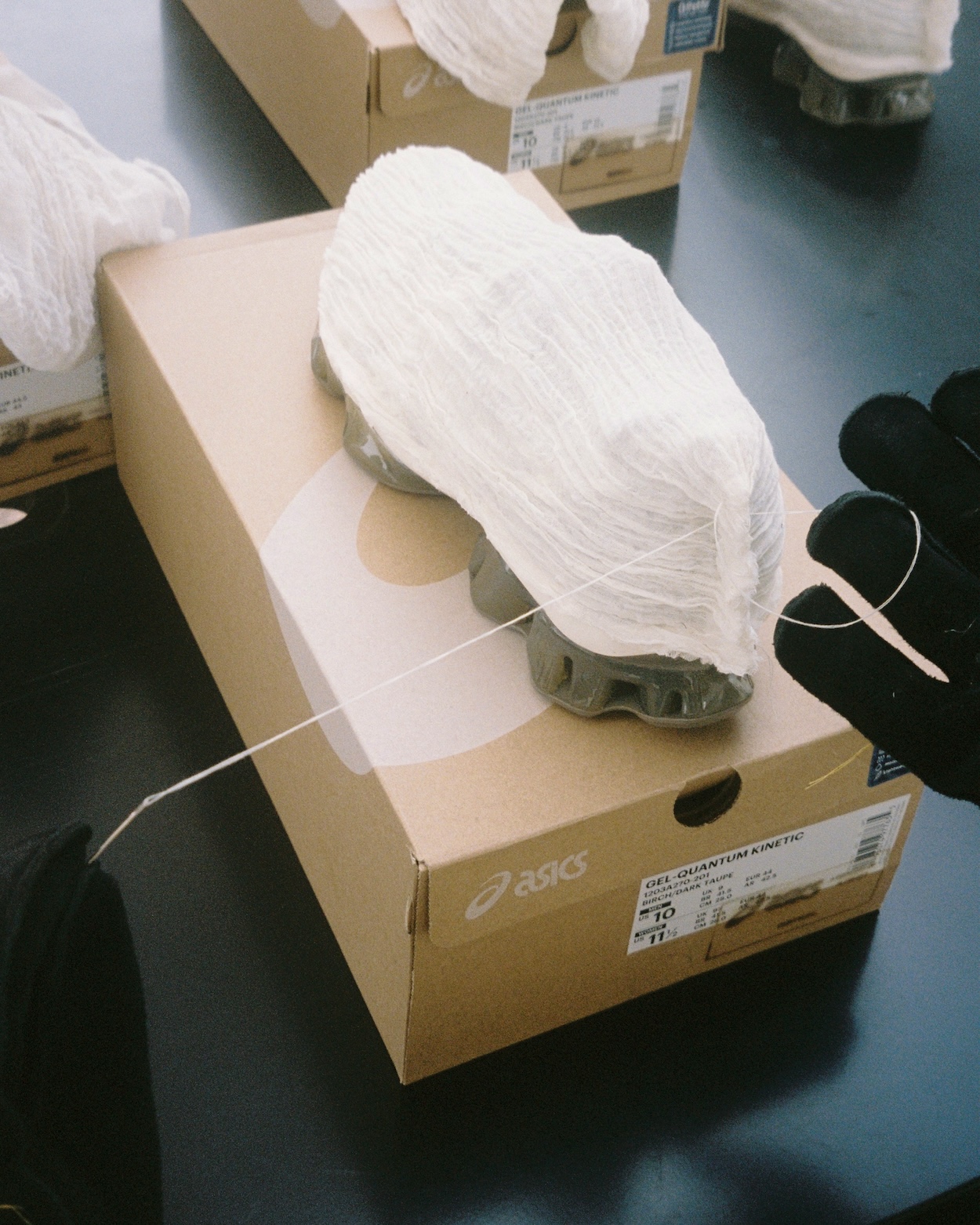
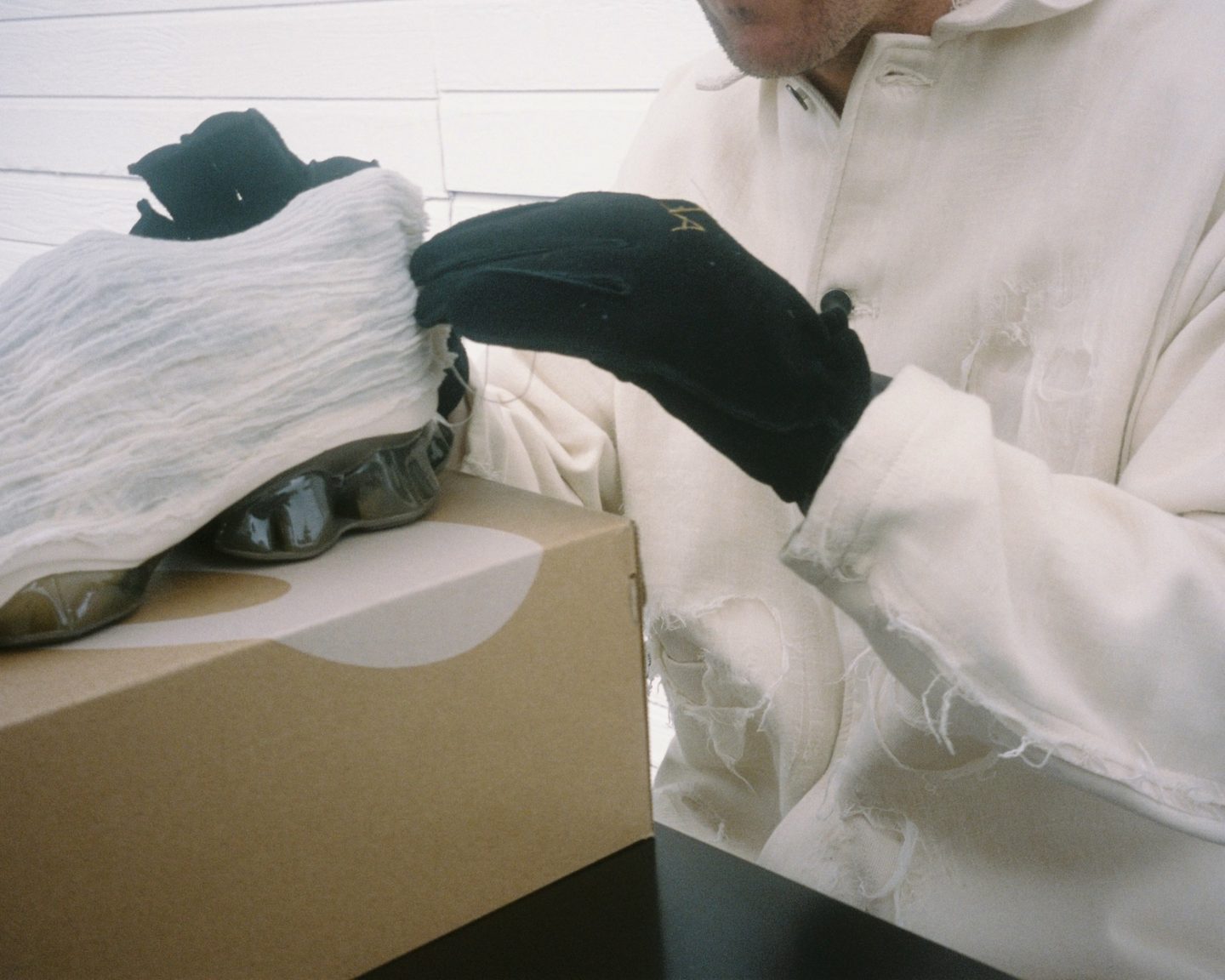
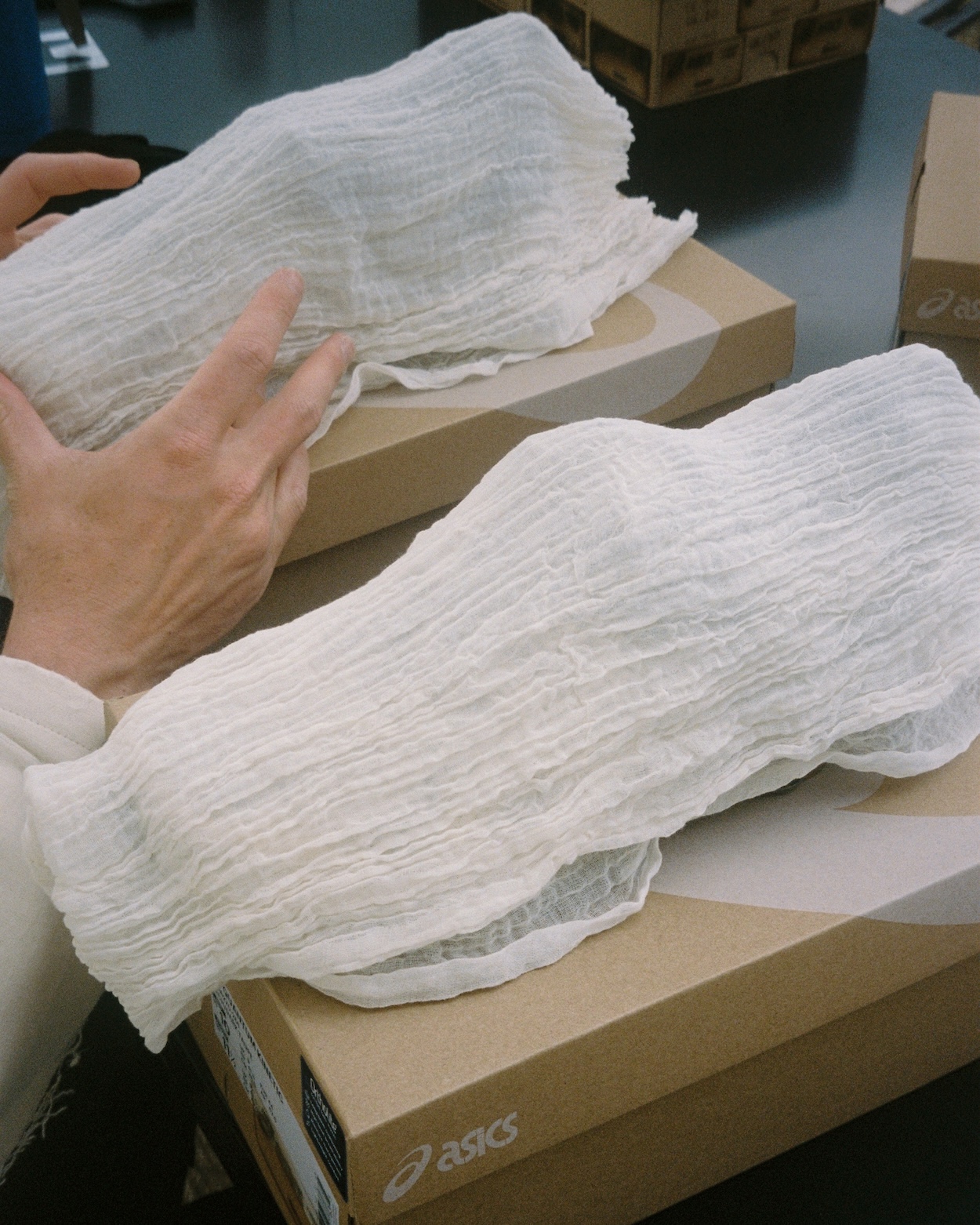
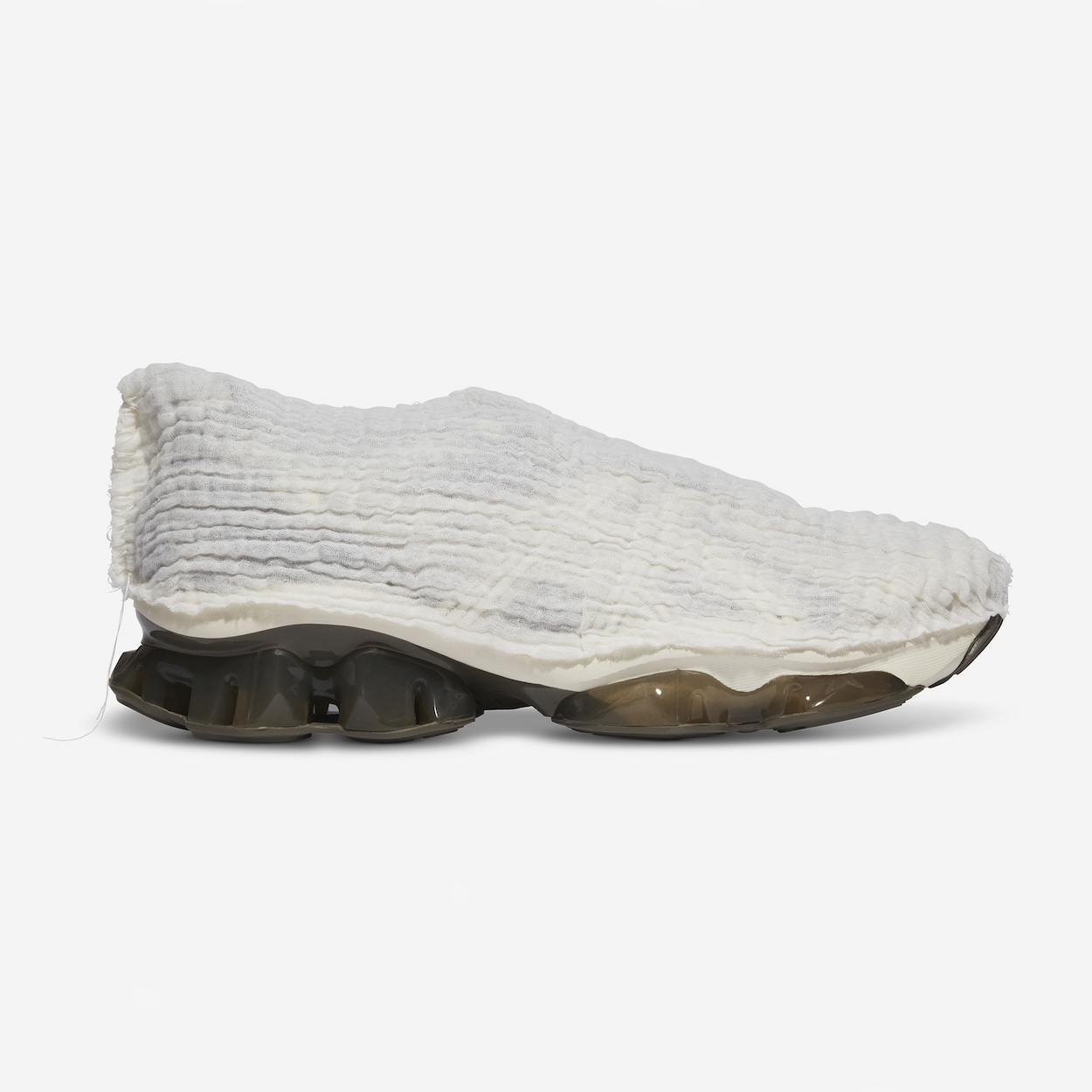
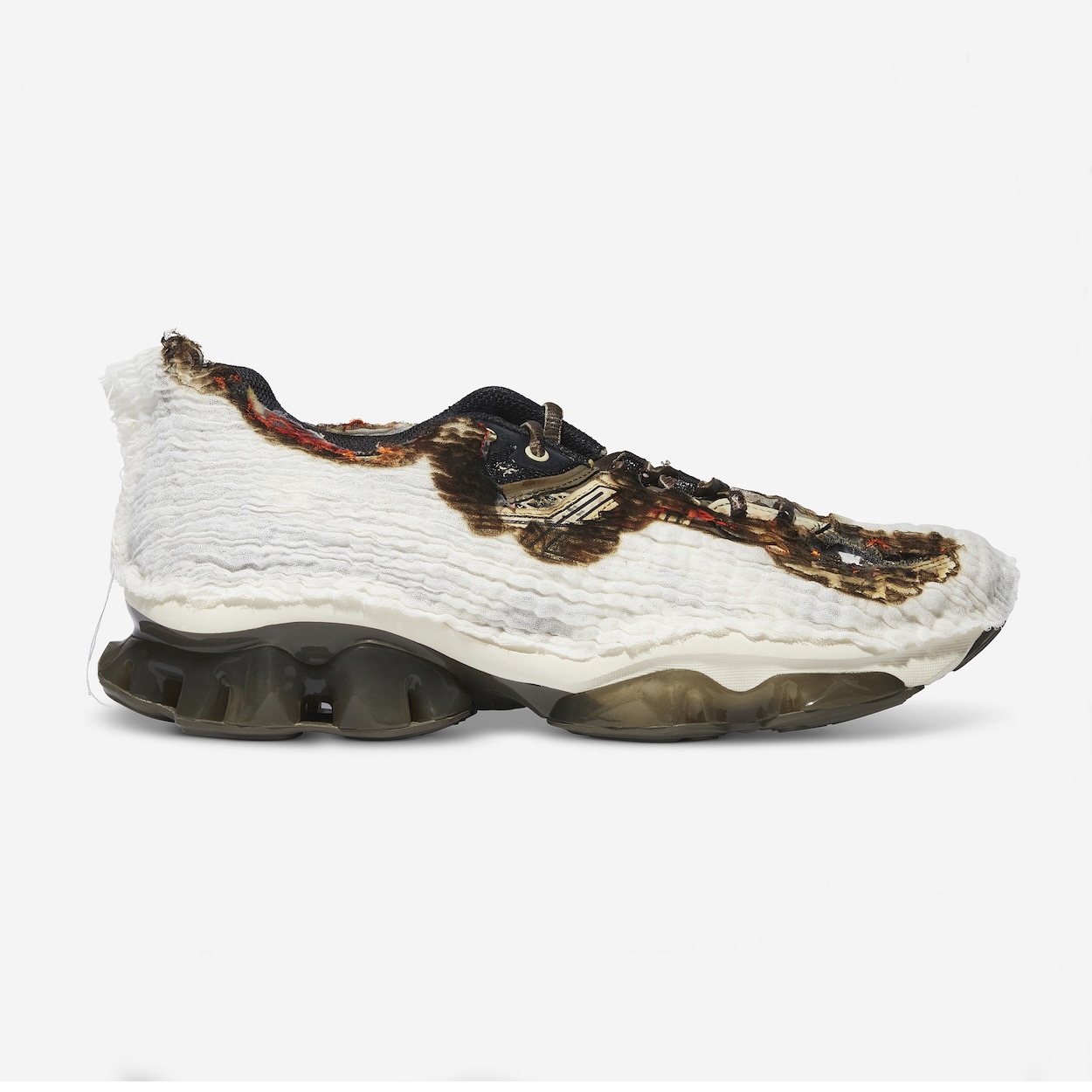
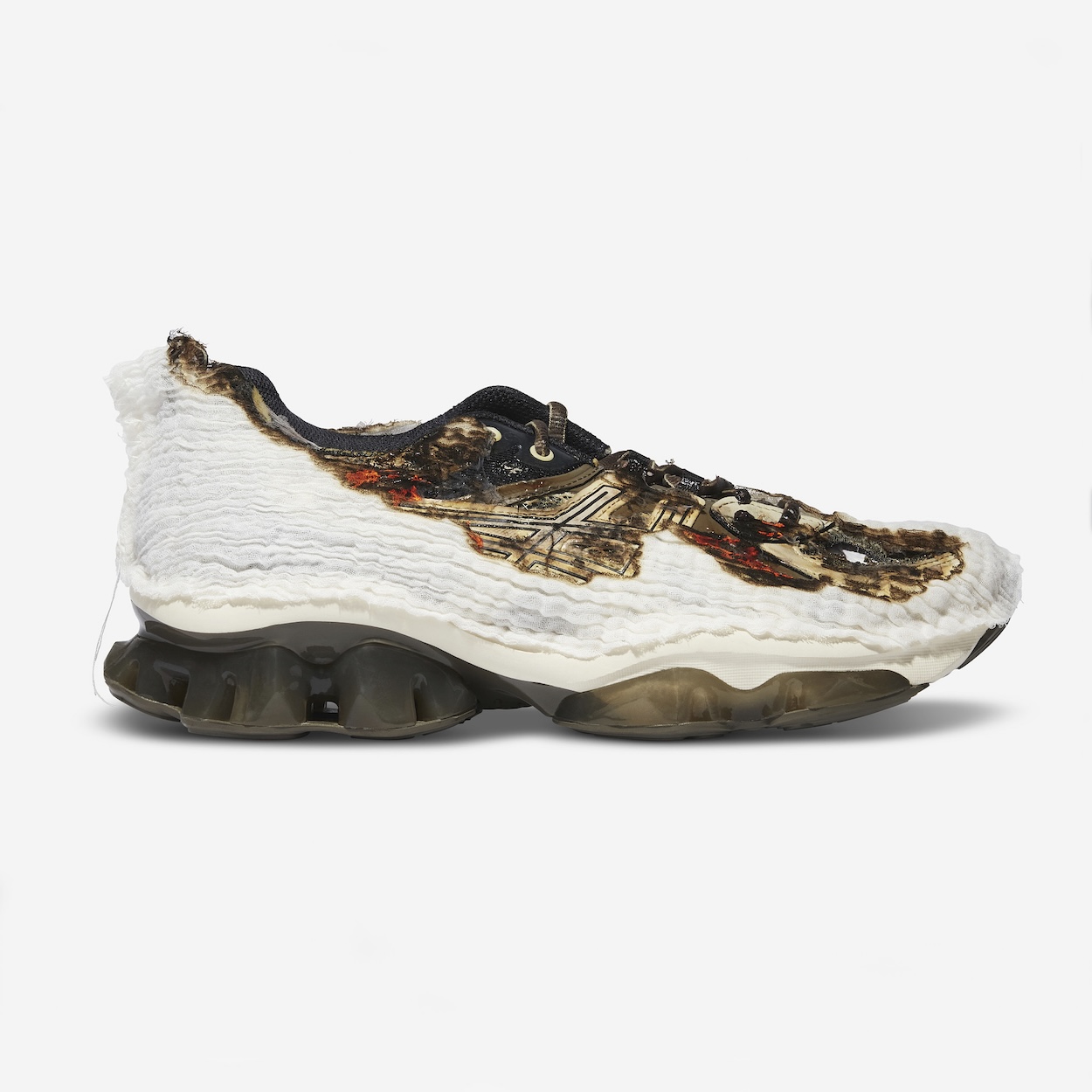
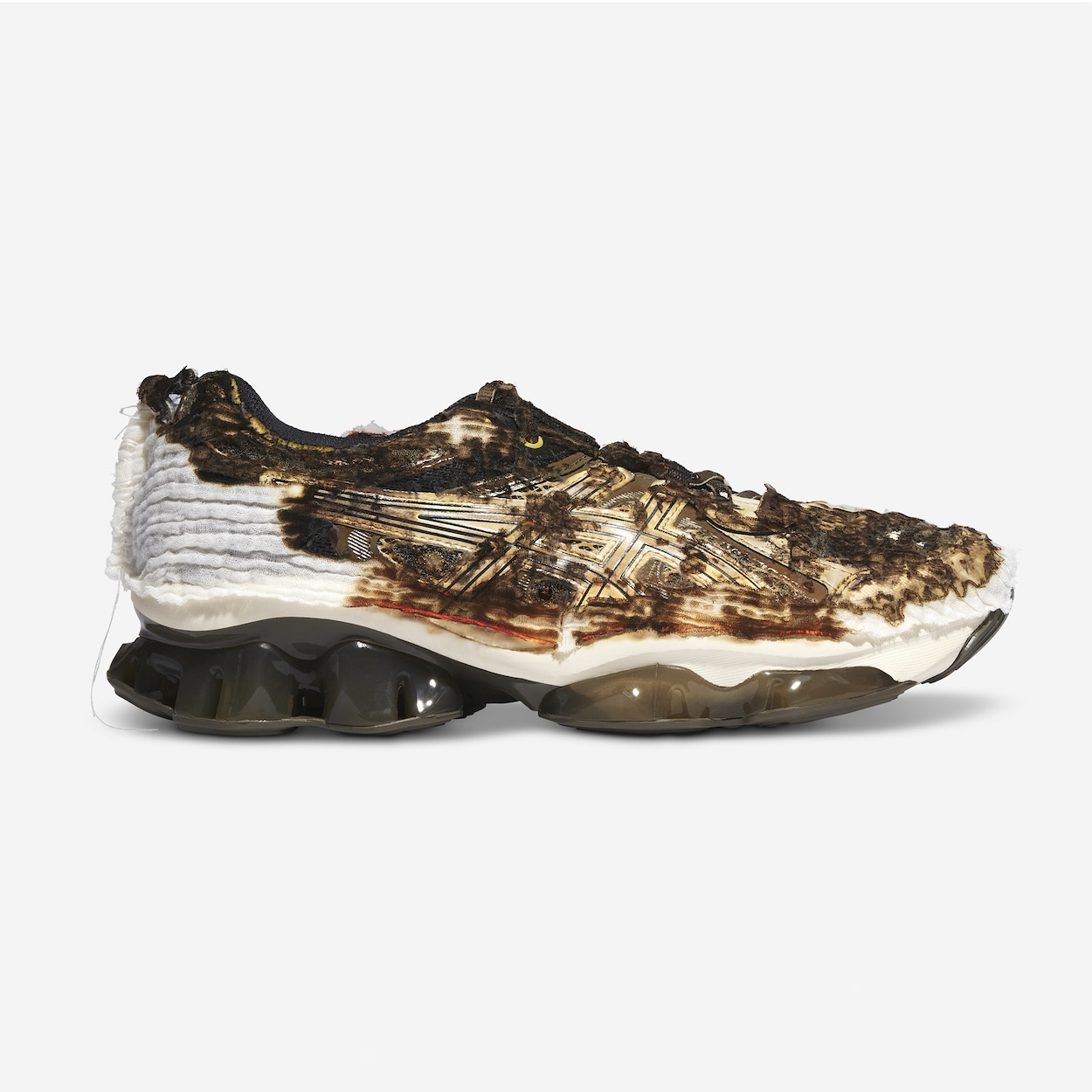
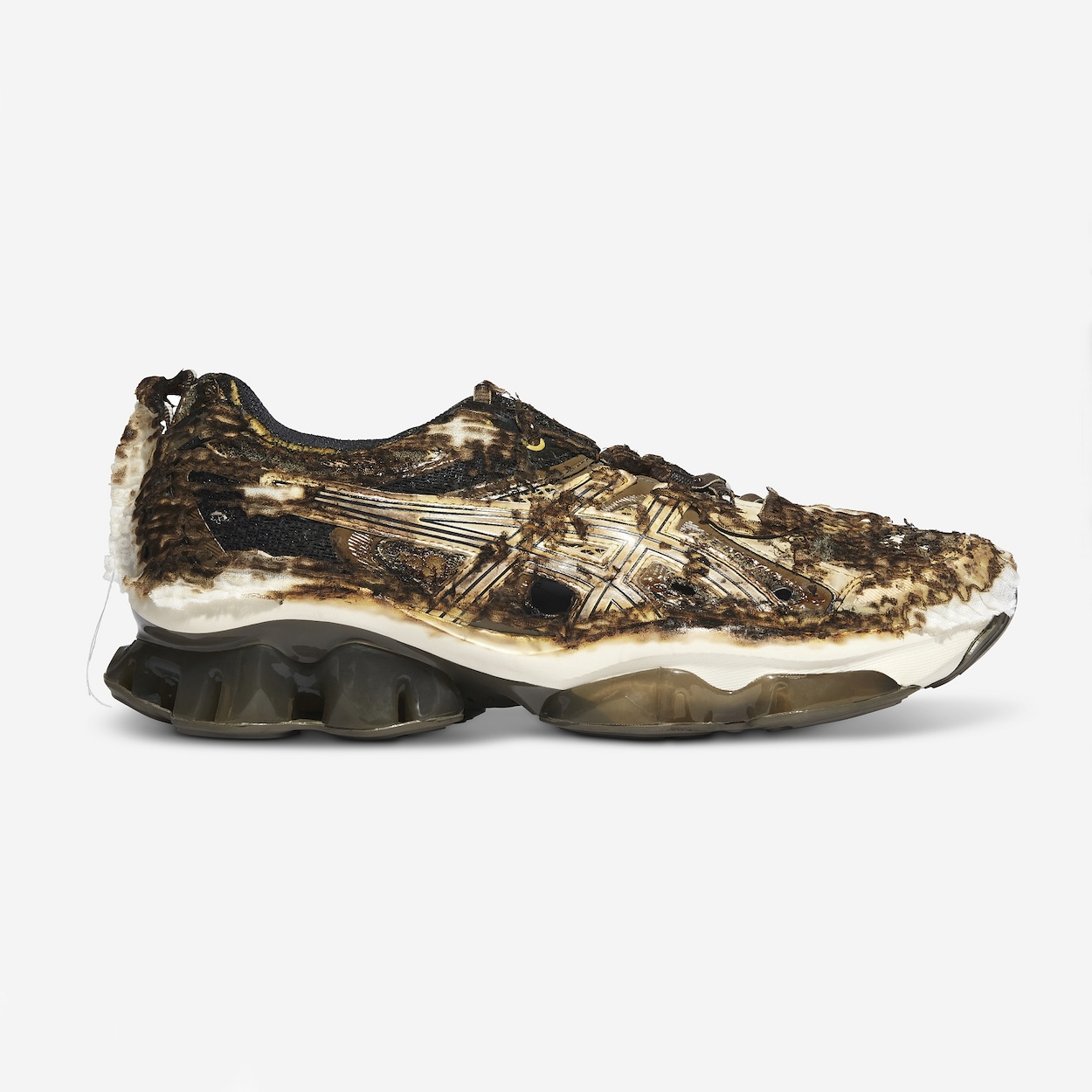
On fire: AIREI did it again
We have seen sneaker collaboration that were setting a new tone, others that have just added to an empty hype. Then, sometimes, there are collaborations that speak of truthful innovation and interpret a new chapter of conceptual fashion. Rising LA based brand AIREI is pretty much a master in that: By having dedicated its creative vision to the idea of having the customer becoming a participant in the evolution of a piece, Airei suggests a new perspective on the relationship between garment and body.
During Felix Los Angeles art fair, AIREI released the first drop of an outstanding ASCIS collaboration to pay homage to not only a very organic bond between art and fashion, but also to the indomitable spirit that resides in us all. Conceptualized during AIREI’s SS24 show WINDHORSE, the brand has wrapped the ASICS Gel-Quantum Kinetic completely in khadi gauze, a fabric made without electricity in Eastern India. The ASICS, a Concept by AIREI Gel-Quantum Kinetic released in februrary, limited to 30 pairs each signed and numbered by AIREI. Last Friday, the second New York drop released, interpreting a new off-white color way. Numéro Berlin exclusively spoke to Airei founder Drew Curry about fragility and endurance, and why AIREI is a story about “us, about the best parts of human nature, about human condition.
The idea of the gauze fully covering the shoe I had even before I had begun a partnership with ASICS. From the beginning of AIREI, I’m always thinking of ideas where the wearer needs to become a participant in the evolution of a piece. For my Spring /Summer 2023 collection, we had worked with the khadi gauze, and the idea of breaking away. But for Spring – Summer 2024, “fire” was the central theme, and I thought it would be a great place to bring in this idea.
The team at ASICS has been great from the start. They’ve trusted me and my ideas. They value creation as well as an artist’s vision. I give them a ton of credit for this partnership because I really couldn’t have done it without their support.
I’ve worked with the same khadi factory since the first collection of AIREI. I believe I first bought this fabric around 3 years ago, and knew I had to use it for something. Usually I have an idea and need to find the materials to support it, but this is one of those situations where the fabric inspired the idea.
Since I had worked with it in the past, we were familiar with the fabric and how it shapes and changes. For a separate project, I had tried to dye the gauze, and what came back was what you saw on the shoes, this more twisted and textured version. It wasn’t the original plan to use this version of the gauze, but it was a happy accident because I think it added a lot of character to the shoes.
The process but mostly the story. What’s great about the fabric is how it’s made: without electricity, in a place that means a lot to me since India is close to my heart. But beyond that, I created AIREI to be about “us,” it’s a story about the best parts of human nature. This fabric represents the most fragile aspects of us. When it’s layered onto ASICS, which represents endurance and resilience, it emphasizes how through trials and tribulations, we persevere.
Some fabrics we create ourselves and others we use recycled or deadstock materials so it depends, but usually it starts with the collection idea, and from there what feeling I’m working to convey through the material.
Our goal was to first work within existing silhouettes which helps us move quickly. It’s a great design challenge as well. It’s not really about adding something to make the shoe better, but changing something to imbue our own story into it.
Because they are made by hand, the time it takes was the most difficult aspect, but also the most important.
What’s exciting to me is the tension it builds within you when you’re about to burn. “What do I do?, where do I start? Should I even touch them?” It’s the same feeling when you’re beginning a new creative journey. This tension is missing from Fashion. These shoes require it because otherwise you can’t wear them.
The clothing is what inspired this idea for the shoes, and part of the collection has the same idea within our denim category where jackets, pants, and shirts are covered by the gauze. In order to get to the pockets you have to rip or burn the gauze away.
I hope that people wear them but it’s also up to the owners discretion. If the wearer chooses to keep them as an art piece on their shelf or still stitched into the bag, then that’s their decision.
Phenomenal. It’s a great fair within LA that’s grown every year, and with Dover Street Market’s first pop up within the fair provided the perfect destination to release a more conceptual project.
This time we were able to release it within our own installation at the DSMNY store. I think it allowed the customers to see it within the context of the collection as a whole.
What I mentioned before about resilience is the single word I would use. Wind horses come from an eastern Buddhist tradition and are flags with prayers printed on them are flown in towns or holy sites around cities. These flags are usually flown until they’ve been completely disintegrated by the harsh elements. What I find fascinating about wind horses is the faith aspect of the practice. The wind is supposedly taking the prayers and lifting them into the heavens. I like the juxtaposition between faith and the resilience. Working all you can toward a mission, but ultimately, admitting that you can’t do it alone and surrendering the outcome.
Because of the work my dad was doing in non-profit and faith-based work, I was exposed early to the real world. I also didn’t grow up knowing much about the capital-F Fashion world, which in hindsight I’m grateful for. Being a designer and wanting to do what other designers do wasn’t the initial inspiration, so it gives me some freedom to explore other ways of showing my collection. I do think the community aspect of Fashion is important, which is why we present new work during Paris Fashion Week, but otherwise, it’s worth it to me to try other avenues besides a traditional runway show.
I have difficulty with the word “authenticity” when it relates to work we create or who we are. Every day I’m working toward a higher self. What is authentic when it relates to me? Is it who I was yesterday? I’m not trying to be that person. I think authenticity can be a crutch to act in ways that don’t serve others. My job is to serve, just as it is for Demna or Jonathan Anderson or any other artist. I can’t say what their mission is because it’s personal, so I can’t judge what is authentic or not.
AIREI is about the human condition, and celebrating that. The scars and the rawness of the garments are a reflection of us. The scars, the mending, it’s part of what makes us human. My sense is that most of Fashion is about escapism, and while there is a time and place for that, my work is about the human experience. It’s about joy and love, but also it’s about hardship, loss, and death. My goal is only to keep doing more of what I’m doing now.

Blumarine, long synonymous with butterflies, chiffon and a distinctly Y2K aesthetic, has…
Interview by Chiara Anzivino
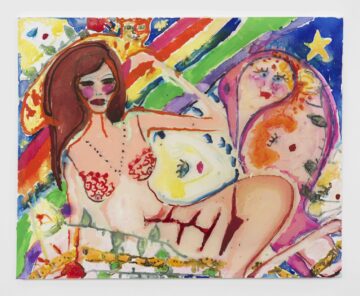
Paz de la Huerta presented Sacrifice, her second solo exhibition with Ruttkowski;68 in…
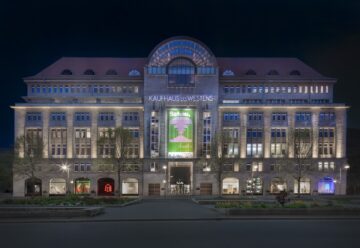
From April 22 to May 10, 2025, KaDeWe is turning its iconic windows into a public…